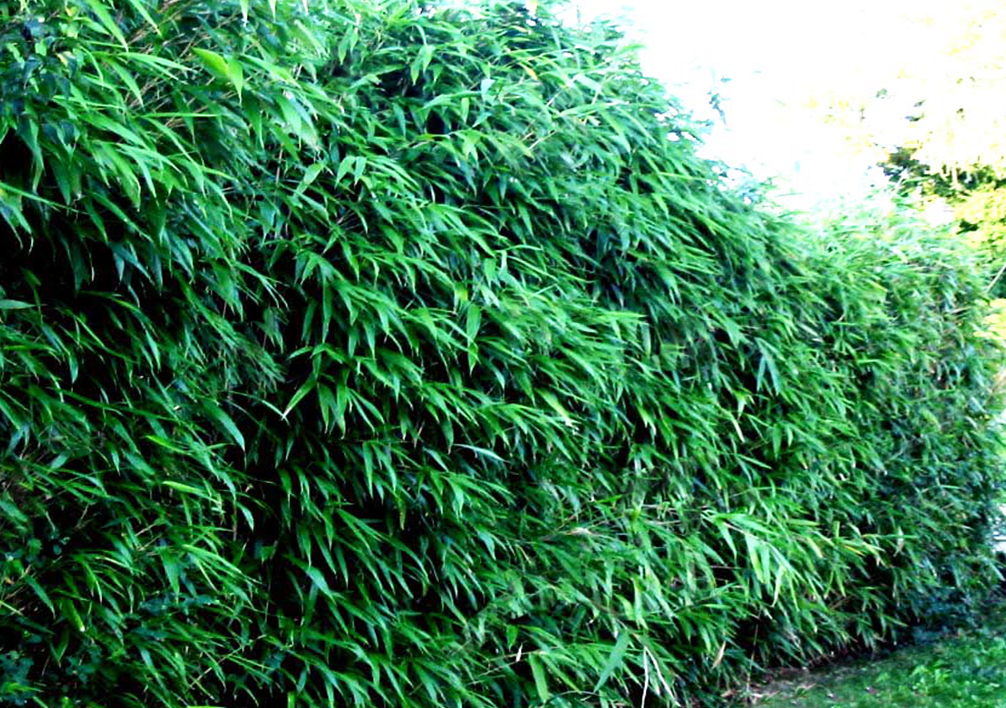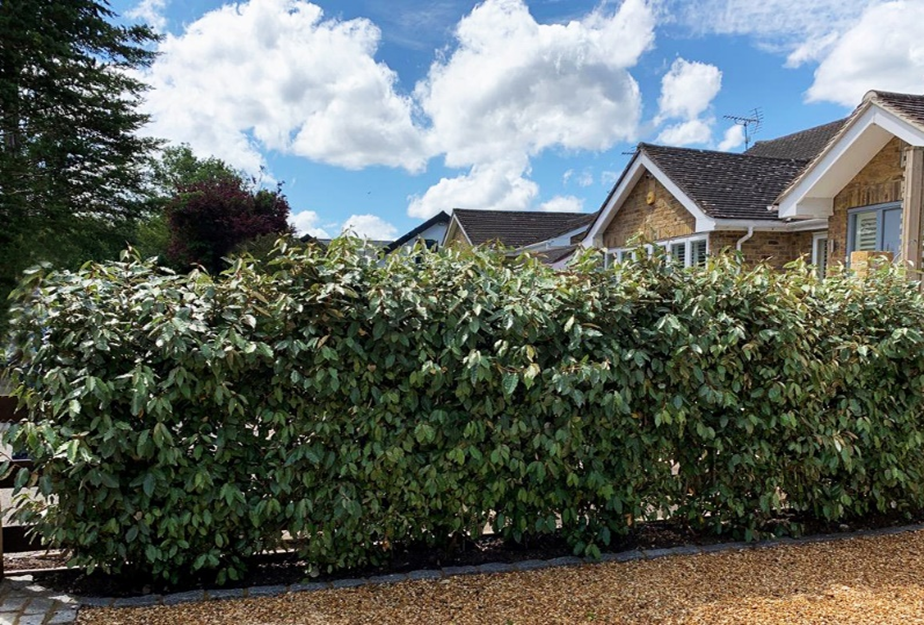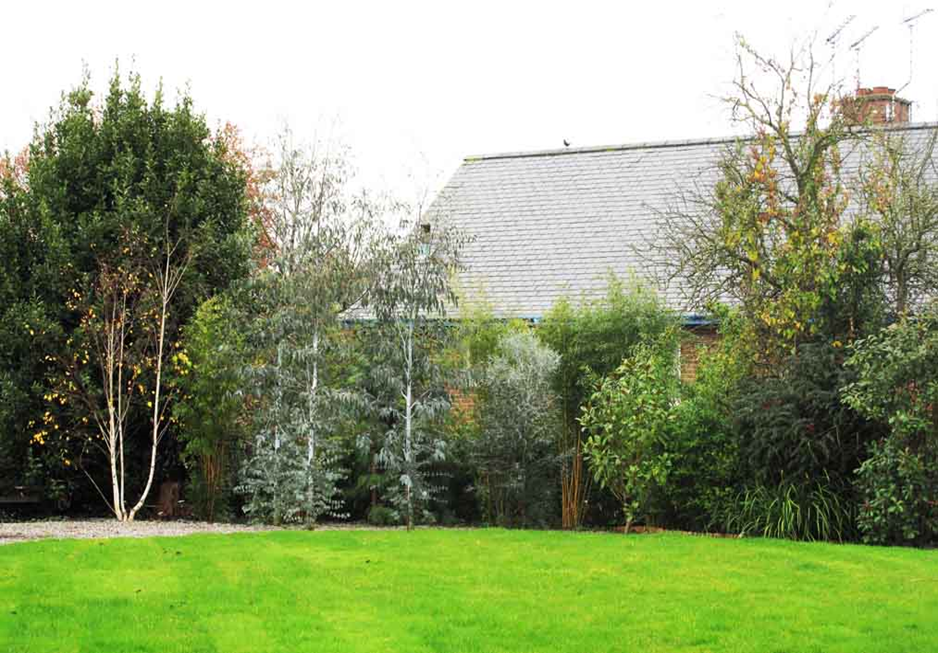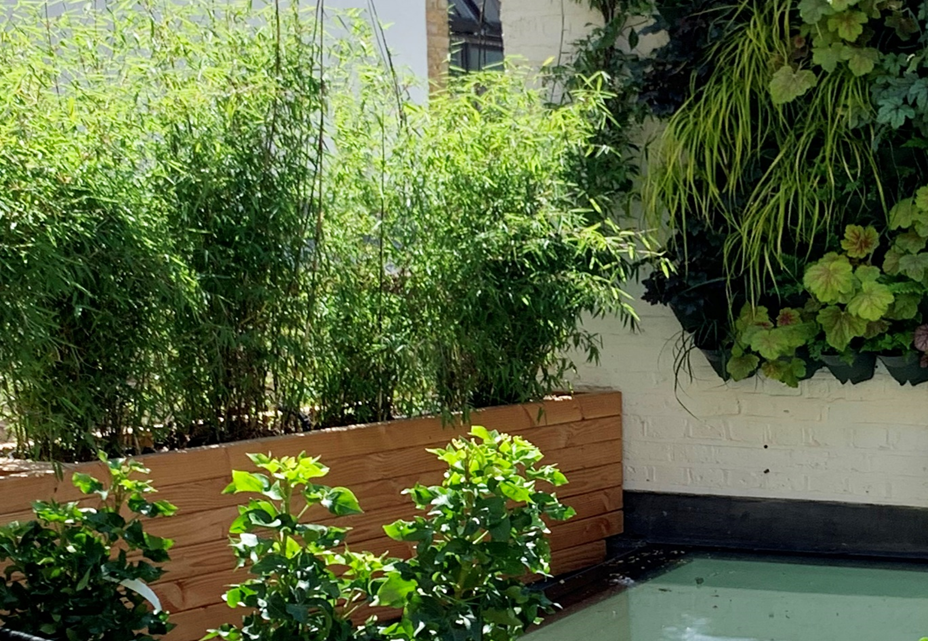Garden Privacy Screening Ideas
Our outdoor spaces are a sanctuary from the world outside, but we can't get away from the neighbours. We can, however, create a decent amount of privacy with easy and economical solutions.
Whether you just need to block off an unattractive view, or if your whole garden is overlooked and needs hiding from view, these garden privacy ideas will soften and enhance the look of your outdoor space without blocking off natural light, disrupting your planting or, offending the neighbours...
Strategic Planting
In reality, depending on the size and orientation of the neighbouring houses, total privacy may be unachievable. The best way to deal with overlooked gardens is to spend time figuring out where you like to sit and other areas where you would like greatest privacy. Then look for ways to add planting to create screening.
Remember - You don't need great tall trees because of the rules of perspective. If you sit in your garden and then look up to those top windows you will see that you don't need a giant to give you some privacy from being over-looked.
You can perhaps see from the diagram below, the nearer you are to the screen/tree the lower it can be. The closer the screen/tree is to the other house, the taller it will need to be.

Decide where you need privacy most and then work out the strategic planting position of your chosen tree or shrubs. The closer it is to the area the more screening it will provide.
It can be lovely to bring things into the garden a little and create breaks so the garden becomes a journey of discovery.
Think about the overall interest a new tree or shrub can add, as well as screening. Do you want blossom in spring, autumn interest, winter bark etc, and do you want an open canopy which lets plenty of dappled light in? Plant something that adds beauty, and just consider your need for screening in terms of where you plant it.
If possible select native tree specimens to encourage biodiversity. Crab apples, birch, hawthorn and blackthorn are all beautiful native trees. However, bear in mind that most native species are deciduous. This means that there will be no leaves from Autumn through to spring, which will significantly reduce the effective screening
The following example of mixed tree species planting illustrates how correct positioning of trees closer to the client’s house means that medium sized trees can be very effective for screening a new large property development.
Alternatives to Planting
Instead of planting you could create covered seating or dining areas with a pergola or awning.

When planning a covered area, you should also think about the weather conditions.
If you plan on having a roof covering, make sure it’s generous enough to keep the rain out properly. Glass or polycarbonate are best as they will not create too much shade or block out light.
Alternatively, you could put up a sail to provide some privacy when you’re sitting in your garden, terrace or balcony. They are made from a lightweight material, so light can still get through, and won’t leave you sitting in a dark shadow!

Perimeter Privacy
Sometimes, for reasons of space and time, only a fence will do.
Generally, fences are limited to 6 feet high, so in order to block higher than that will require planting of some sort.
Try a series of arches, layer of trellis or wires tensioned on posts above a fence to give some extra privacy.
It can be used to train climbers up too and thus gain colour and maybe perfume, depending on what you choose.
If you want instant coverage whilst your chosen climbers mature, then just fix shading/wind membrane to the trellis as a temporary solution.
If your fence screening is north-facing be aware that anything tall and dense planted there will cast shade into your garden, leaving you with less sun and making it more difficult to grow other plants, shrubs and trees.
Just another tip to add into your mix !
Pleached Trees Screening
Another effective natural solution to regain privacy above the height of a fence to block off overlooking houses is by installing pleached trees. Pleached trees are trees that have been trained to form a stunning screen of branches and foliage on a single, straight stem.
If you’re intrigued by the idea of pleached trees, take a look at our case study.
Bamboo Privacy Screening
The High Hedges Act does not include bamboo as it is classed as a grass. This means that you can avoid the need for permits and simply grow an effective privacy fence. However, limitations can vary in certain areas so to be sure it’s best to check with your local council.
Bamboo can be classified into 2 groups: invasive and non-invasive. Invasive bamboo is also known as ‘running bamboo’ and can spread very quickly. For this reason, invasive bamboo is rarely used for privacy screening. However, they can also be grown safely in containers, assuming they are given enough space for their circular growth habit.
Running bamboo is well-suited to narrow or trough style containers as their roots can turn and continue to grow in any direction, expanding the total root mass to support further growth.
We recommend planting the more gentle bamboo species in planters, as they are easier to maintain, and prevent becoming pot bound.
Please note that if you use Bamboos in planters for screening it is essential to avoid them drying out, which can easily happen with such a large extensive leaf area. Once they dry out, you will experience extensive leaf fall for that season, but they will grow back the following season.
Non-invasive bamboo, also called ‘clumping bamboo’, grows in discrete clumps.
Clumping bamboos are a popular choice for growing privacy fences and screens, as it is easily managed.
Choosing what type of bamboo plants for screening to use varies greatly based on your individual requirements.
We recommend the graceful Bamboo species, such as the Fargesia, as they are very elegant, provide effective screening, and are easy to control. If you would like to plant them in the ground it is essential to dig out a trench and fully line it with a bamboo root barrier.
The most effective species are Phyllostachys aurea and P.bissetii, and Pseudosasa japonica (See below). Other attractive options include Phyllostachys spectabilis and P.nigra.

Living Green Screens

Living Green Screens or ivy screening has grown in popularity over the last few years thanks to their ability to provide instant low maintenance garden screening, giving a decent amount of privacy whilst still letting in sunlight and a warm summer's breeze.
Being ultra slim they have all the benefits of an instant hedge without intruding on your garden space.
Of course summer in the UK can be unpredictable, but living green screens also offer protection from the elements, acting as a wind break and creating an oasis of calm where you can relax without being buffeted by the breeze.
They also offer an environmentally friendly solution to traditional fencing, encouraging a living environment, supporting an array of wildlife.


Instant Privacy Hedging without the wait

The high density of urban living often results in smaller sections with a view of a neighbour’s fence or property, significantly reducing the charm factor.
Blocking out the view with an instant hedge can change the entire feel of the home.
It’s hard to put a value on the ability to look out the window and enjoy the beauty of a vibrant instant living hedge instead of your neighbour’s wall.
Instant hedging is a great way to get some privacy without having to wait for the plants to grow out, providing a thick, lush, dense hedge, which provides instant screening and interest.
What’s more, instant hedging is an environmentally friendly way to create a secure boundary around your home in place of a fence.
Your name *














